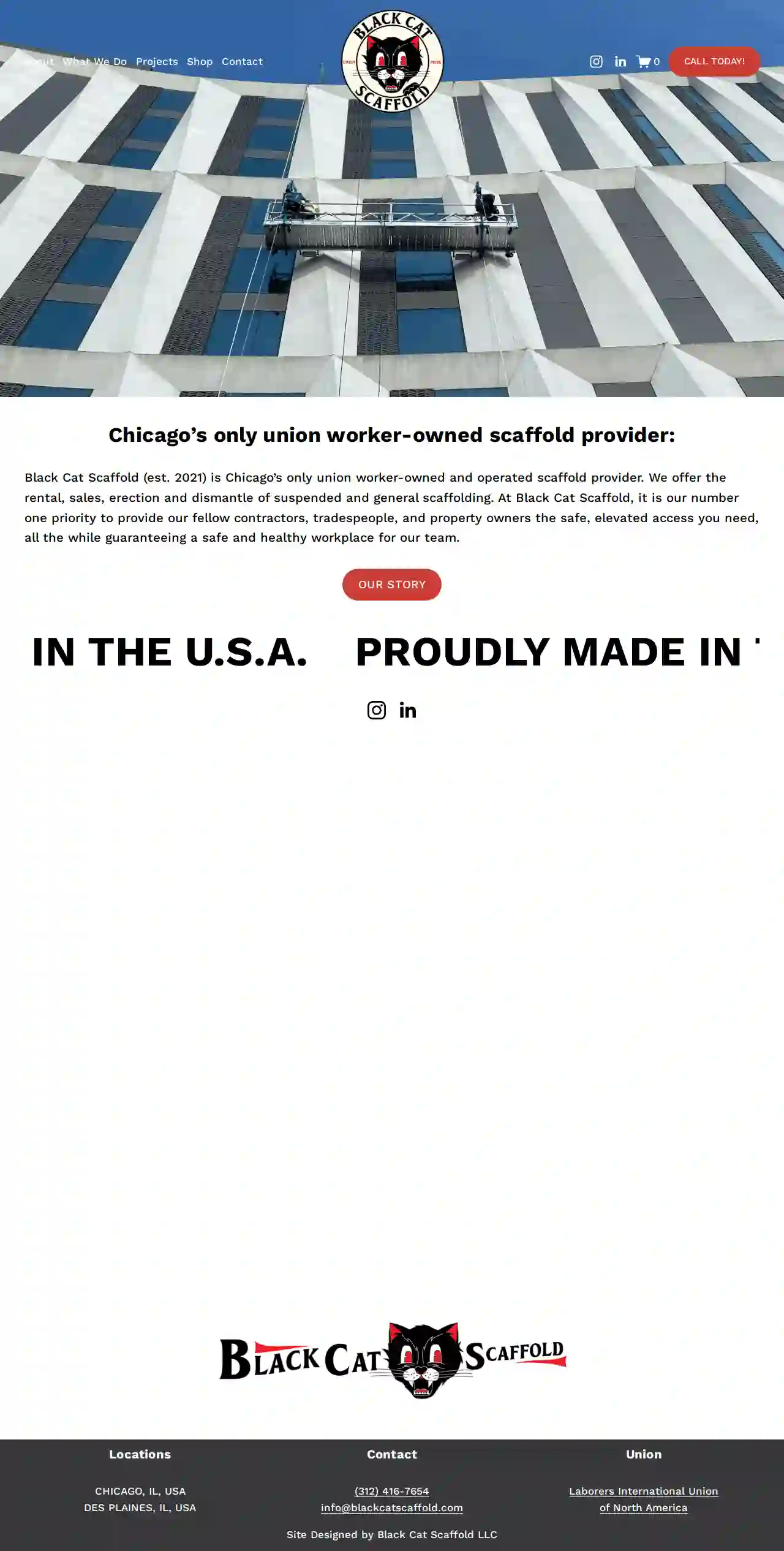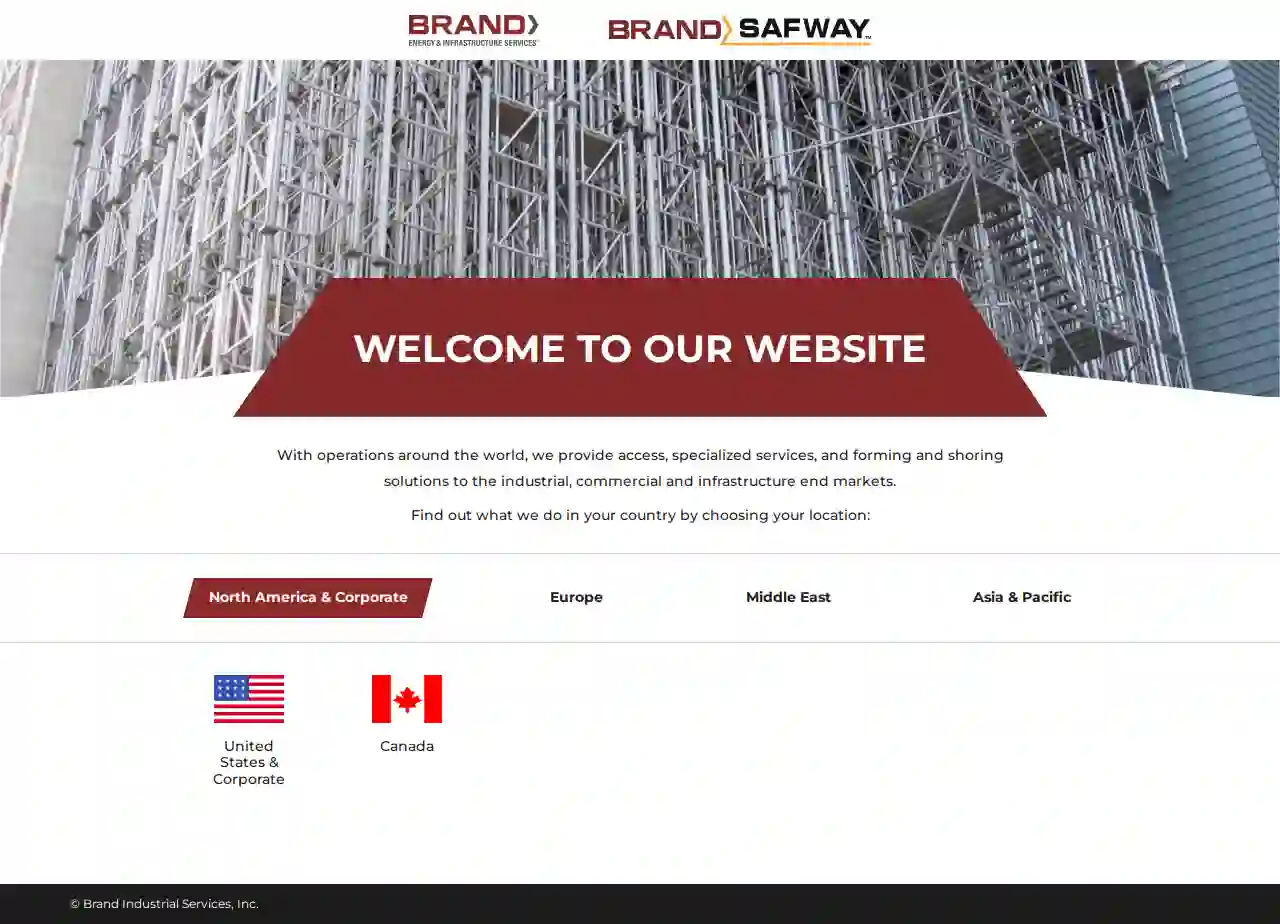Scaffolding Companies Lincoln
Top Scaffolding Companies in Lincoln
Get 3 FREE Scaffolding Company quotes for your project today! Compare profiles, reviews, accreditations, portfolio, etc... and choose the best deal.

JC Licht Benjamin Moore Paint & Decor Store Addison
4.7139 reviews1500 N. Addison Ave., Addison, 60102, USShop JC Licht Online or at one of our 48 locations in Chicagoland. Your local, neighborhood Benjamin Moore dealer. Our Story JC Licht has been serving the Chicagoland area for over 100 years. We are a family-owned and operated business that is committed to providing our customers with the best possible service and selection. We offer a wide variety of Benjamin Moore paints, stains, and finishes, as well as a full line of window treatments, wallpaper, and hardware. We also offer a variety of services, including color consultations, in-home estimates, and professional installation. Our Mission Our mission is to provide our customers with the best possible experience. We want to make sure that you are happy with your purchase and that you feel confident in your decision. We are committed to providing you with the highest quality products and services, and we are always here to answer your questions and help you find the perfect solution for your needs. Our Team Our team is made up of experienced professionals who are passionate about helping you create the home of your dreams. We are committed to providing you with the best possible service and we are always here to answer your questions and help you find the perfect solution for your needs.
- Services
- Why Us?
- Gallery
Get Quote
Black Cat Scaffold
52 reviewsChicago, USBlack Cat Scaffold (est. 2021) is Chicago’s first union worker-owned and operated scaffold provider offering the rental, sales, erection and dismantle of suspended and general scaffolding. At Black Cat Scaffold, it is our number one priority to provide our fellow contractors, tradespeople, and property owners the safe, elevated access you need, all the while guaranteeing a safe and healthy workplace for our team. As an American, minority-owned (MBE Certified), small business, we offer superior client focus and competitive pricing. Unlike most in our local industry, Black Cat Scaffold offers majority American-made swing stage and scaffold equipment through our US (Ohio) manufacturers. At Black Cat Scaffold it is our belief that when union laborers have ownership in the business they work for, they are able to provide top tier services and expertise. With a collective 25 years of experience in the Chicago Building Trades, this is our pledge to every client. Thank you for considering Black Cat Scaffold for your future access needs!
- Services
- Why Us?
- Accreditations
- Gallery
Get Quote
Menards
4.2863 reviewsChampaign, USMenards is a leading home improvement store offering a wide range of products and services. With a strong commitment to quality and customer satisfaction, Menards provides tools, materials, and expert advice for various home improvement projects. Their mission is to provide excellent service, quality products, and competitive prices to help customers achieve their home improvement goals.
- Services
- Why Us?
- Gallery
Get Quote
MVC Painting
4.976 reviews800 E Northwest Hwy, Suite 750, 800 E Northwest Hwy Suite 750, Palatine, 60074, USWelcome to MVC Painting, a full-service painting company with over 15 years of experience in making our client's home improvement dreams become a reality. Our team of skilled professionals is dedicated to providing high-quality workmanship and customer service. We offer a wide range of services, including interior/exterior painting, drywall installation and repair, power washing, and more. With 100% customer satisfaction guaranteed, you can rely on us to get it right the first time. We have 5-star ratings from hundreds of customers just like you.
- Services
- Why Us?
- Gallery
Get Quote
Gilco Scaffolding Co
3.316 reviews515 Jarvis Ave, Des Plaines, 60018, USExcellence In Scaffold Installations, Rentals, Sales And Safety Chicago’s Leading Scaffolding Contractor Since 1938 – Proudly Serving Chicago Our Services Family owned and operated since 1938, Tom and Gus continue the company’s commitment to safety, customer service and innovative designs. Scaffolding Services At Gilco Scaffolding Co LLC, we are a full-service company dedicated to providing value-added scaffolding services to customers in all of the construction trades. Who we are Our dedication and hard work have allowed us to remain a successful company for many years. As a family-owned and operated business, we pride ourselves on providing a personalized touch to each of our clients. Tom, and Gus understand that personalized customer service is the key to building a loyal clientele base.
- Services
- Why Us?
- Gallery
Get Quote
Rental City Inc
4.5109 reviews2508 N. Mattis Ave., Champaign, 61821, USWelcome to Rental City! When you need a project done right, quality tools can be just as important as the people using them. We know you have other choices for your equipment needs. What sets Rental City apart from others is our dedication to you, our customer, with spectacular customer service. With decades of experience and over 2,000 items available for short-term rental, Rental City is a family owned business dedicated to serving your needs; whether residential or corporate. Rental City began with Mac D. Drysdale’s commitment to providing the best possible equipment in impeccable condition to benefit the greater Champaign community over 60 years ago. Today, we strive to offer the best product catalog, most convenient solutions, and the most effective and pleasant customer service available. We look forward to the opportunity of serving your family or business, and are here to help you get the job done.
- Services
- Why Us?
- Gallery
Get Quote
International Equipment Inc
25218 S State St, Crete, 60417, USInternational Equipment, Inc. is a leading supplier and installer of high-quality scaffold equipment that enables your crews to work productively and safely at heights. Wherever you need your scaffolding to take you International Equipment has the right equipment for your project. Servicing all of the Midwest, International Equipment responds quickly to the needs of our customers, even during emergencies. We are a devoted team committed to providing the right product for your project with a personal touch that many larger competitors cannot match. We offer designs in augmented or virtual reality as well as 3D allowing you to see your design as it will appear when installed. You won’t pay for estimator’s guess work or extra rental charges for equipment you don’t need. Parts lists and installation costs are accurate with our estimating systems. With our resources and extensive inventory of equipment we are able to provide you with a variety of options to buy or rent. From project planning and installation of equipment to rigorous safety standards and training, International Equipment is there for you from start to finish.
- Services
- Why Us?
- Gallery
Get Quote
Thompson Rental Station, Inc.
4.583 reviews215 W. Irving Park Road, Bensenville, 60106, USThompson's Rental specializes in equipment and tool rentals, as well as equipment sales, serving Northeastern Illinois. With two rental store locations in Bensenville and Des Plaines, IL, they offer a wide selection of equipment rentals and sales, including excavators, skid steers, lifts, lawn and garden tools, generators, air compressors, and more. They also provide party rentals and used equipment for sale. Their commitment to customer satisfaction and quality equipment sets them apart.
- Services
- Why Us?
- Gallery
Get Quote
Ziegler's Ace-Lake in the Hills
4.4234 reviews123 Main St, Bartlett, IL, 60103, USZiegler's Ace is a team dedicated to developing trusting relationships with neighbors by providing everyday solutions for homes and businesses. Our objective is to win and have fun doing it. We believe in honesty, reliability, accountability, empathy, and ethical behavior as the building blocks to any successful business or trusted relationship. We strive for greatness with a humble, modest, and respectful attitude. Our vision is to be the best, most helpful stores on the planet.
- Services
- Why Us?
- Gallery
Get Quote
Brand Energy and Infrastructure Services
Chicago, USWith operations around the world, we provide access, specialized services, and forming and shoring solutions to the industrial, commercial and infrastructure end markets.
- Services
- Why Us?
- Gallery
Get Quote
Over 2,353+ Scaffolding Contractors registered
Our scaffolding companies operate in Lincoln & beyond!
ScaffoldingHQ has curated and vetted the Best Scaffolding Businesses in and around Lincoln. Find a trustworthy contractor today.
Frequently Asked Questions About Scaffolding Companies
- A larger, more complex structure typically used for accessing multiple levels of a building.
- Offers greater height and versatility.
- Often used for construction, renovation, and maintenance.
- Smaller, portable platforms usually used for tasks at a single level.
- Commonly used for painting, plastering, or light repairs.
- Can be rolling or stationary.
- Traditional and highly versatile.
- Components (tubes, clamps, boards) are assembled on-site.
- Adaptable to complex shapes and structures.
- Requires skilled labor and more time for erection.
- Pre-engineered, modular components.
- Faster and easier to erect.
- Often has higher load capacities.
- May be less versatile for complex shapes.
- Project Height and Access: The height of the structure and the accessibility of the working area are primary considerations.
- Load Capacity: The weight of workers, materials, and equipment that the scaffolding needs to support.
- Project Complexity and Shape: The shape and complexity of the structure may necessitate specialized scaffolding configurations.
- Ground Conditions: The type of ground (soft, uneven, sloping) will influence the scaffolding foundation and support requirements.
- Duration of Use: The length of time the scaffolding will be needed can impact the choice of system.
- Budget: Different scaffolding types have varying costs.
What is the difference between scaffolding and staging?
Scaffolding:
What is a scaffolding hoist?
What is the difference between tube and clamp scaffolding and system scaffolding?
Tube and Clamp Scaffolding:
How do I choose the right type of scaffolding for my project?
What is the difference between scaffolding and staging?
Scaffolding:
- A larger, more complex structure typically used for accessing multiple levels of a building.
- Offers greater height and versatility.
- Often used for construction, renovation, and maintenance.
- Smaller, portable platforms usually used for tasks at a single level.
- Commonly used for painting, plastering, or light repairs.
- Can be rolling or stationary.
What is a scaffolding hoist?
What is the difference between tube and clamp scaffolding and system scaffolding?
Tube and Clamp Scaffolding:
- Traditional and highly versatile.
- Components (tubes, clamps, boards) are assembled on-site.
- Adaptable to complex shapes and structures.
- Requires skilled labor and more time for erection.
- Pre-engineered, modular components.
- Faster and easier to erect.
- Often has higher load capacities.
- May be less versatile for complex shapes.
How do I choose the right type of scaffolding for my project?
- Project Height and Access: The height of the structure and the accessibility of the working area are primary considerations.
- Load Capacity: The weight of workers, materials, and equipment that the scaffolding needs to support.
- Project Complexity and Shape: The shape and complexity of the structure may necessitate specialized scaffolding configurations.
- Ground Conditions: The type of ground (soft, uneven, sloping) will influence the scaffolding foundation and support requirements.
- Duration of Use: The length of time the scaffolding will be needed can impact the choice of system.
- Budget: Different scaffolding types have varying costs.